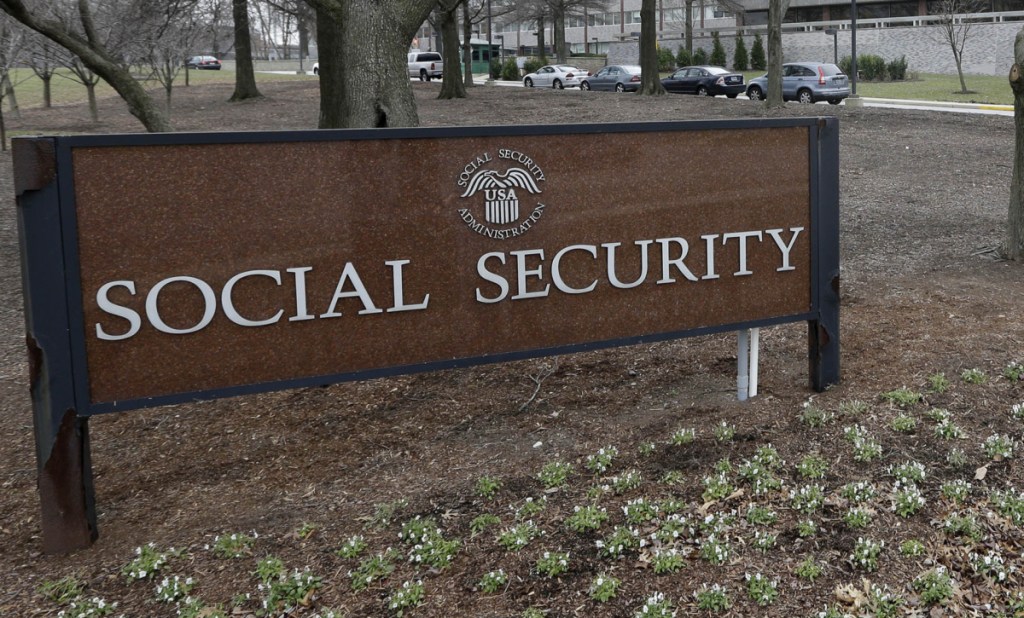The Social Security crisis is not only real, it is already well upon us.
That may not have been obvious to everyone from the annual report issued by the program’s trustees recently. With neither a dire nor stellar update, the report inspired little passion. In fact, many might have mistaken the minor changes to mean that Social Security’s finances are now stable. But don’t be fooled: The absence of alarming headlines is anything but good news.
The trustees reported that Social Security’s slide toward insolvency sped up over the last year. They also estimated that its combined retirement and disability trust funds will run dry in 2034, the same projection as last year. That means Social Security’s day of financial reckoning is now one year closer at just over 15 years away.
If action isn’t taken sooner, there would be a 23 percent reduction in benefits at that point. To ensure that Social Security remains viable for the most vulnerable in our society, policymakers must soon address its severe and urgent financial challenges.
Take the program’s revenue. Payroll taxes and interest on the bonds held in the Social Security trust funds have been able to cover full benefits since 1982. But not any longer. The trustees now estimate that Social Security is expected to run a deficit of $2 billion this year. The drawdown of the trust funds has officially begun.
As further evidence of the program’s financial problems, the 75-year financial shortfall for the combined trust funds is $13.2 trillion in present value. Extending beyond that time frame, the estimated total shortfall is a whopping $34.3 trillion. For comparison, our nation’s gross domestic product is slightly over $18 trillion, and our gross national debt at the end of May was $21.1 trillion.
It’s important to understand that there are actually two separate trust funds: one for the retirement program (Old-Age and Survivors Insurance, or OASI), and one for the disability program (Disability Insurance, or DI). For the former, the trustees estimate the fund can continue to pay full benefits until 2034, at which point the program will only be able to pay about three-quarters of scheduled benefits. The disability program, the trustees estimate, will hit insolvency in 2032.
But focusing too much on small changes on the insolvency dates can also lead to a false sense of security. The DI trust fund was on track to run out of money in 2016, which would have triggered an automatic 20 percent cut in benefits.
But the previous November, Congress passed and President Barack Obama signed the Bipartisan Budget Act of 2015, temporarily reallocating some payroll taxes to shore up the fund — putting a little less into the retirement trust fund and a little more into the disability fund. But taking from one Social Security trust fund to backfill the other is just robbing Peter to pay Paul; it doesn’t fix the underlying problems with the disability program, and reforms are still necessary.
The trustees have once again sent a clear warning that the Social Security crisis is real, of a staggering magnitude, and already here. We can’t afford to wait or grow complacent, and risk Social Security’s retirement and disability programs becoming far larger and more difficult to shore up.
Fortunately, there are bipartisan policy solutions available. An expansive project housed at the Bipartisan Policy Center suggested reforms to improve retirement security and personal savings. Those include restoring Social Security to a secure financial footing by making changes to both benefits and taxes. Importantly, this is possible while still safeguarding those most dependent on the program, and “reducing” poverty in the long term among older Americans.
While less alarming headlines won’t compel policymakers to act on Social Security, the numbers should. With the program beginning to draw down on its trust funds, we are another step closer to automatic benefit cuts when the trust funds run dry, which would throw millions of elderly Americans into poverty.
But this crisis can be avoided altogether if those in charge base their decisions on the needs of Social Security beneficiaries — not the headlines.
Jason J. Fichtner is a fellow at the Bipartisan Policy Center, a senior research fellow at the Mercatus Center, and a senior lecturer at the Johns Hopkins University School of Advanced International Studies. The Bipartisan Policy Center is a D.C.-based think tank that actively promotes bipartisanship.
———
©2018 CQ-Roll Call, Inc., All Rights Reserved
Visit CQ Roll Call at www.rollcall.com
Distributed by Tribune Content Agency, LLC.
Copy the Story LinkSend questions/comments to the editors.



Success. Please wait for the page to reload. If the page does not reload within 5 seconds, please refresh the page.
Enter your email and password to access comments.
Hi, to comment on stories you must . This profile is in addition to your subscription and website login.
Already have a commenting profile? .
Invalid username/password.
Please check your email to confirm and complete your registration.
Only subscribers are eligible to post comments. Please subscribe or login first for digital access. Here’s why.
Use the form below to reset your password. When you've submitted your account email, we will send an email with a reset code.